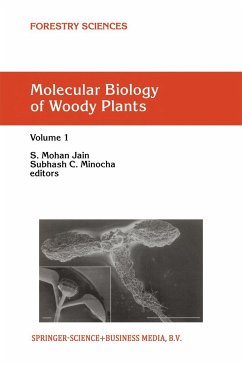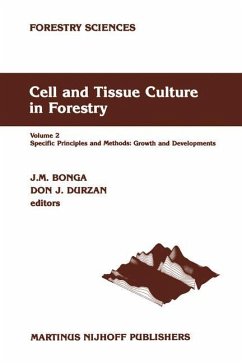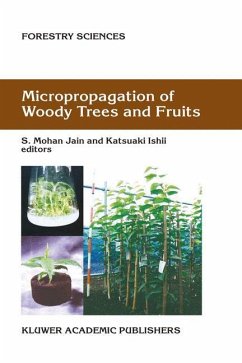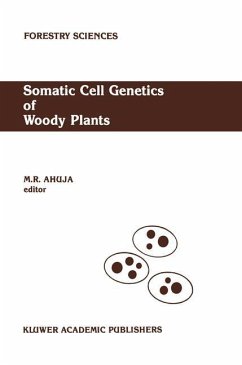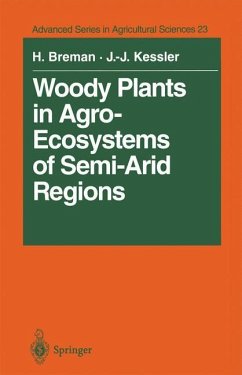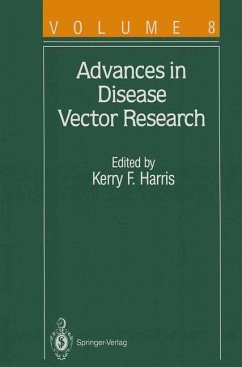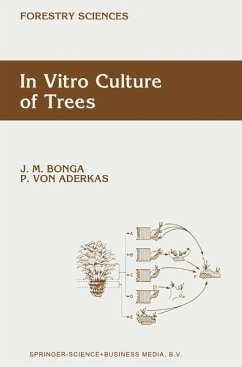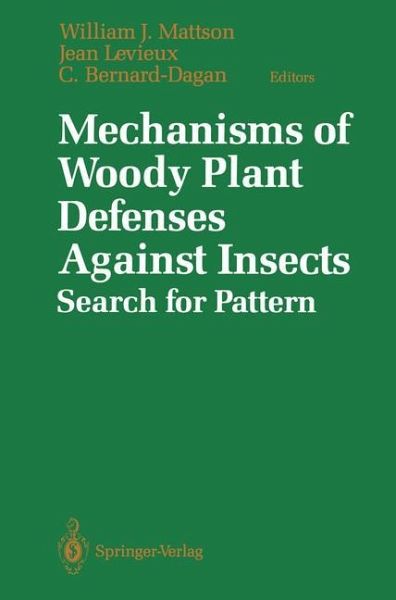
Mechanisms of Woody Plant Defenses Against Insects
Search for Pattern
Herausgegeben von Mattson, William J.; Levieux, Jean; Bernard-Dagan, C.
Versandkostenfrei!
Versandfertig in 6-10 Tagen
76,99 €
inkl. MwSt.

PAYBACK Punkte
38 °P sammeln!
In 1984, a new research working party on mechanismsofwoody plant resistance against insects and pathogens(lUFROS2. 05-06) was formed in the International Union ofForestryResearchOrganizations. Thepurposeofthisworkingparty istostimulate and facilitate research progress in this areathroughenhancedcommunication among themany researchscientistsscatteredamongthevariouscountriesoftheworld. This volume istheresultofthe first internationalsymposiumofthisworkingparty, which took place in Orleans. France on August 26-29, 1986. Thanks are due to Institute Nationalde laRechercheAgronomique,StationdeZoolog...
In 1984, a new research working party on mechanismsofwoody plant resistance against insects and pathogens(lUFROS2. 05-06) was formed in the International Union ofForestryResearchOrganizations. Thepurposeofthisworkingparty istostimulate and facilitate research progress in this areathroughenhancedcommunication among themany researchscientistsscatteredamongthevariouscountriesoftheworld. This volume istheresultofthe first internationalsymposiumofthisworkingparty, which took place in Orleans. France on August 26-29, 1986. Thanks are due to Institute Nationalde laRechercheAgronomique,StationdeZoologie, Forestiere, fortheir in strumental part in organizingthis symposium, and to the University and the Cityof Orleansforgenerousfinancial support. The intentofthis proceedings is to (a) bring together adiverse array ofresearch resultsonthemechanismsofwoodyplantresistanceagainstdifferentkindsofinsects. and(b) to search for threadsofcommonality among these different plant/insect as sociationstofurtherourfundamental understandingofhowplantsdefendthemselves againstphytophagousorganisms. Theresearchpapersareorganizedintothreemaingroups. Thefirstgroupexamines plant defenses from various basic physiological and ecological considerations. The remaining papers, which are mainly case studiesofplant resistance against insects. arecategorizedon the basisofinsect intimacy with host tissues: (a) highly mobile. free feeders suchas moth larvae andsawflies, and (b)poorlymobile, "attached" or imbeddedfeederssuchasaphids,scales,miners, andbarkbeetles. Eachofthesesections isfurtherorganizedonthebasisofkindoftissueattackedbytheinsects,eitherleaves orstern/shootcortexand vasculartissues. Contents Preface v Contributors IX I. Basic Physiological and Ecological Considerations I. DefensiveStrategiesofWoody PlantsAgainst Different Insect-Feeding Guilds in Relation to Plant Ecological Strategiesand IntimacyofAssociation with Insects W. J. Mattson. R. K. Lawrence, R. A. Haack, D. A. Herms, and p. J. Charles 3 2. Towards a UnifiedTheoryofPlant Defense A. A. Berryman. . . . . . . . . . . . . . . . . . . . . . . . . . . . . . . . . . . . . . . . . . . . . . . . . . . . . . . . . . . 3lJ 3. DefensiveResponsesofTrees inRelationtoTheirCarbon/NutrientBalance J. Tuomi, P. Niemela, F. S. Chapin,1II,J. P. Bryant,andS. Siren 57 4. GrowthandDifferentiation·BalanceRelationshipsinPinesAffectTheirRe· sistance to Bark Beetles(Coleoptera: Scolytidae) P. L. Lorio, Jr. 73 5. SeasonalVariations inEnergySourcesandBiosynthesisofTerpenes in Maritime Pine C. Bernard-Dagan 93 6. Terpene Biosynthesis Under PathologicalConditions C. Cheniclet, C. Bernard-Dagan, andG.






